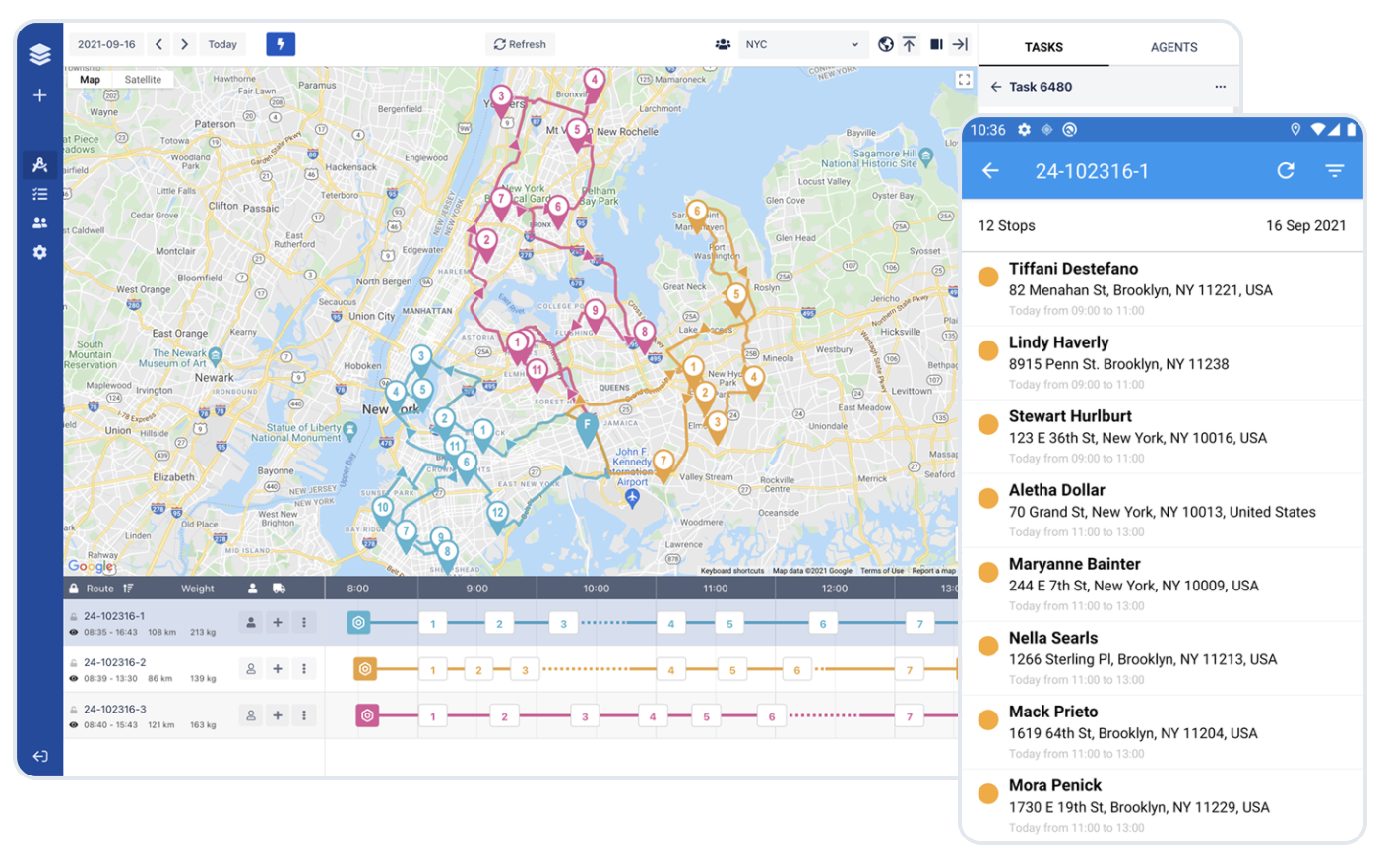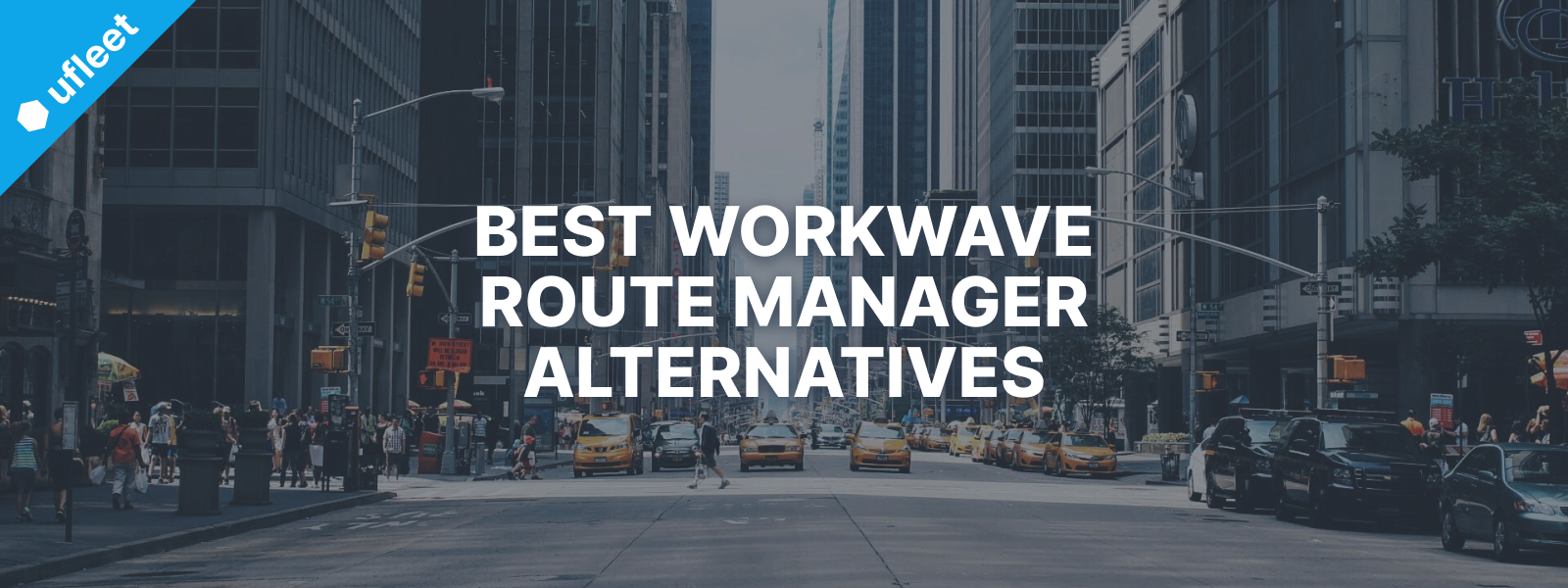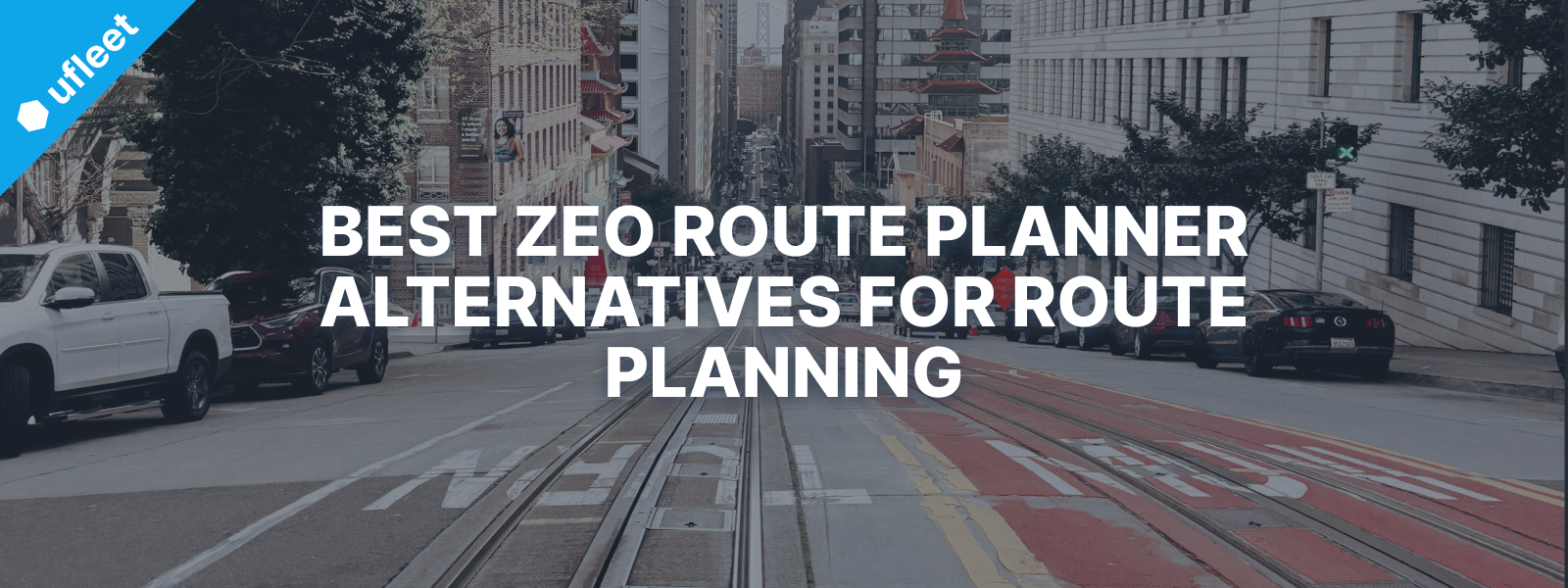Logistics contribute to a huge part of global carbon emissions. The result is a growing pressure towards decarbonization and ESG practices.
5 Ways to Reduce Carbon Emissions in Logistics in 2025
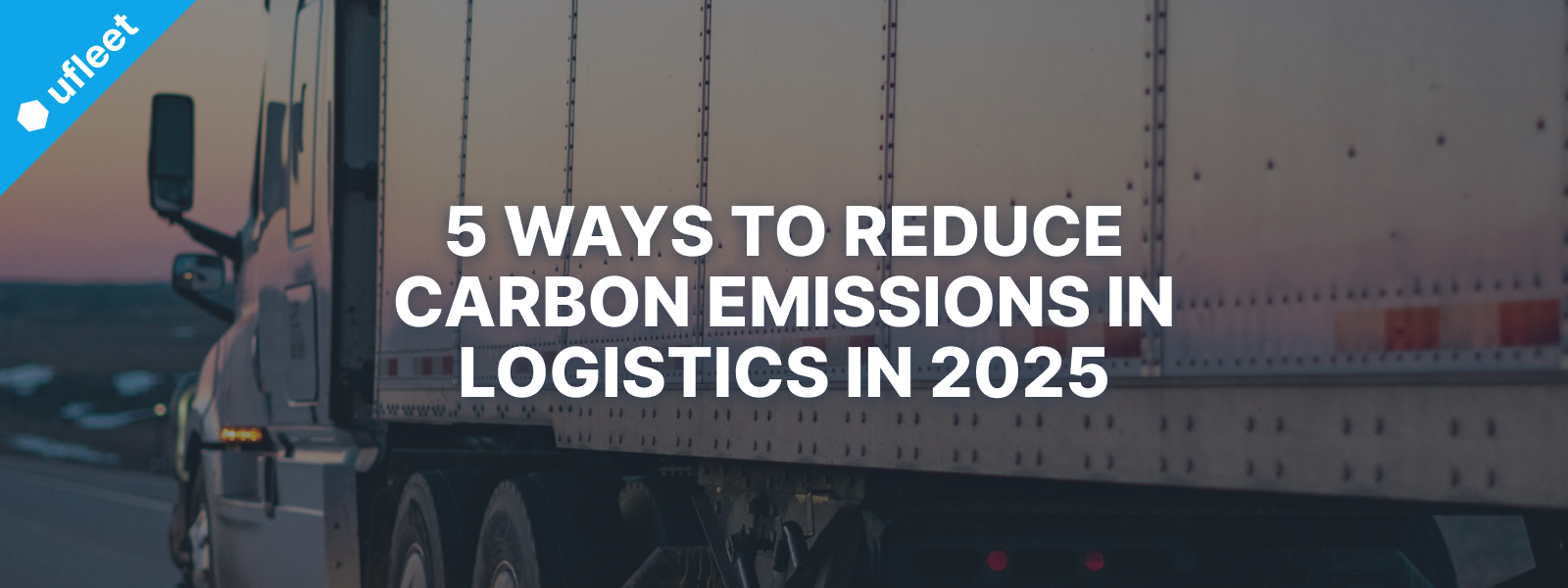
In recent years, there has been a significant increase in awareness of the environmental impact of various industries. The logistics sector, in particular, is facing scrutiny over its carbon emissions caused by the transportation of goods. The result is a growing pressure towards decarbonization and ESG practices.
In this blog post, you will find information about the current sustainability landscape along with 7 strategies for more eco-friendly logistics operations. You'll also read about 3 companies that are good examples of sustainable logistics.
Here's the table of contents:
- The carbon footprint of shipping
- A growing pressure for ESG policies
- How to reduce carbon emissions in logistics
- Companies with sustainable delivery practices
The carbon footprint of shipping
Logistics play a pivotal role in the modern economy. Unfortunately, they also contribute to a huge part of the global carbon emissions. International shipping produced 706 million metric tons of carbon emissions (MtCO₂) in 2023.
Data about 2024 is not yet available, but we doubt it will be less as the numbers have been increasing year after year. The only exception is 2020 when due to COVID-19 restrictions, the emissions dropped but otherwise, the trend is upwards.
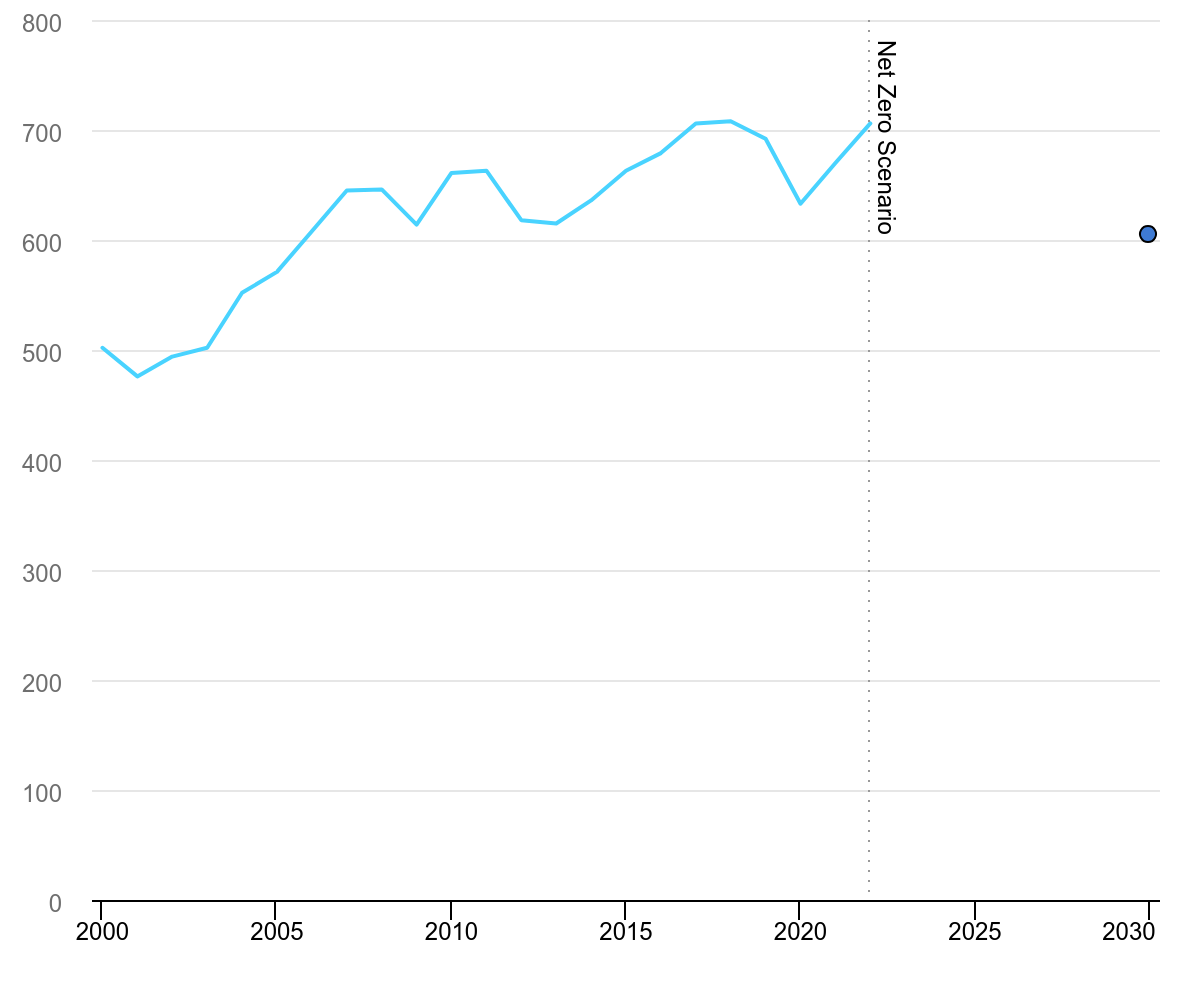
A McKinsey research says that road freight in particular generates 53% of CO2 emissions within global trade-related transport. And according to IEA international maritime shipping created 2% of global energy-related carbon dioxide emissions. Historically, the trend has almost always been upward except for 2020. Last mile delivery on the other hand produces 41% of global emissions in the logistics sector according to The World Economic Forum.
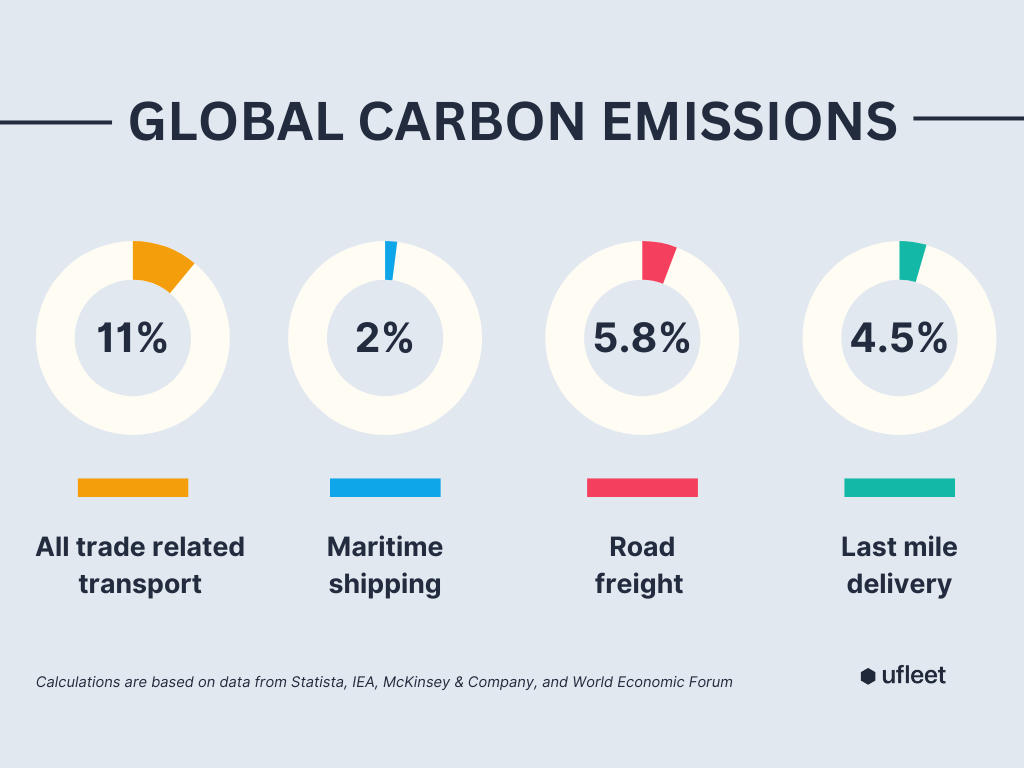
A growing pressure for ESG policies
ESG stands for Environmental, social, and corporate governance. The framework shows how a company supports sustainability, human rights, and transparent operations. And while some time ago it was rather a nice-to-have option, it has now become a must for businesses worldwide.
The reasons include climate change, inequality, the shift towards a circular economy, the need for transparency, and the growing number of ESG regulations and pressure from society.
The Environmental pillar of ESG includes efficiency use of energy, policies for reducing carbon footprint, waste reduction policies, and more. While there are some differences between its implications in the US and Europe (plus the fact that the pressure towards embracing ESG in Europe is bigger), the general idea is pretty common.
How to reduce carbon emissions in logistics
Businesses can implement various strategies and technologies to reduce their carbon footprint in transportation and delivery. A holistic strategy will not only contribute to more eco-friendly operations but also improve efficiency, reduce logistics costs, and build a positive brand image.
Here are 7 effective ways to achieve this:
Electric vehicles
One prominent approach is the integration of electric vehicles (EVs) as road transport fleets. While this is not a cheap investment, most EVs produce zero or close to zero CO2 emissions which significantly reduces the carbon footprint.
EVs are particularly useful in last mile delivery because of a few reasons:
- short distances
- driving at low speed
- time spent in congestion
- multiple stops a day
According to research, EVs have the potential to reduce last mile carbon emissions by up to 50% by 2030. Moreover, there are tons of global incentives and subsidies that encourage the adoption of EVs.
First and middle mile delivery can also benefit from zero-emissions vehicles in some cases. Battery capacity has been one of the biggest objections for a long time but during the past years, manufacturers like Ford, Daimler, and Rivian have released transportation vehicles specifically designed for longer distances.
Additionally, the number of countries that push towards more sustainable middle and first mile delivery is growing. For example, EU regulations require trucks to reduce carbon emissions by 30 percent by 2030. This is possible only when part or all delivery fleets are electric. In the US, the ACT regulation demands from manufacturers all truck sales to be of electric models by 2045.
Delivery drones and robots
Another option for decreasing carbon emissions in logistics is the use of delivery drones and robots. Their superpower lies in the ability to bypass road traffic and deliver packages faster. The downside is, due to size and weight limitations, they can be used only in last mile delivery.
Compared to traditional last mile delivery, drones produce 25% less carbon emissions. They can also reduce total cost by 22% and shorten delivery time by 21%.
Similarly, autonomous robots have a positive impact on the environment because they too produce minimal or zero CO2 emissions. Their smaller size helps them to navigate faster in dense urban areas. It also allows for the optimization of space. Serve Robotics, one of the pioneers in the sector has a great motto. It’s “Why deliver 2-pound burritos in 2-ton cars” and perfectly represents the issue with space optimization.
Autonomous delivery robots rely on advanced AI models to navigate throughout the city. They can understand the dynamics of traffic, pedestrians, and obstacles along the way. The video below is a good overview of their capabilities.
Delivery route optimization
A notably effective strategy to decrease carbon footprint is to optimize delivery routes. Route optimization is the process of finding the shortest and most efficient routes to make a series of deliveries. This allows businesses to reduce travel distances, and travel time, and also avoid unnecessary stops.
Just like the drones and robots mentioned above, this method is most beneficial for last mile delivery where vehicles make multiple stops a day.
Think of route optimization as automated calculations done by software, usually a SaaS solution. You can optimize routes manually of course (mostly by using Google Maps and Excel), but that's applicable only if your delivery volumes are low. Once you pass a certain threshold, let's say 500-1000 deliveries a month, you can't really optimize routes without a software.
Delivery management platforms use mathematical algorithms to predict the best route based on multiple factors such as:
- distance
- delivery window
- weight of packages
- volume of packages
- truck capacity
...and more.
If you're curious about how such software solutions work, check out the video below. It's a quick overview of Ufleet, our route optimization engine, from which you can get a good idea of the basics of this kind of technology.
Alternative fuels
Alternative fuels serve as substitutes for traditional fuels, such as oil, coal, and gas. Alternatives are not yet fully integrated into the transportation industry and possess some limitations, but they do offer certain benefits and the interest in them grows. It's important to note that not all alternative fuels are fully sustainable (such as LNG and CNG) but the ones we cover below are.
Examples of sustainable alternatives are biofuels, hydrogen, synthetic fuels, and electricity (we covered electricity in the previous paragraphs about EVs).
Biofuels are made from biomass such as wood offcuts, agricultural by-products, cooking oil, algae, and more. Besides being cleaner for the environment, they also solve some of the waste management problems we have on a global level.
Hydrogen power is considered the fuel of the future according to experts. What's so impressive about this technology is that it turns gas into electricity without generating any CO2 emissions. The only emissions are water vapor.
Synthetic fuels, also called eFuels, are chemically created fuels. They are produced with electricity from renewable sources, water, and CO2. Commonly, they are named after traditional fuels - for example, eGasoline, eDiesel, etc. Unfortunately, their production is still extremely expensive which is an obstacle but hopefully in the upcoming years things will change for the better.
Sustainable delivery options
Another way to reduce carbon emissions is to encourage end customers to choose more eco-friendly delivery options. Surveys indicate that a significant percentage of consumers are willing to pay extra for environmentally friendly delivery services.
For last mile, businesses can offer delivery slots during off-peak hours, for example. This allows combining multiple orders for a single trip. This not only lowers emissions but also helps avoid traffic congestion in urban areas. Another option is to offer in-store pick-up for certain deliveries.
Another solution is the smart delivery lockers. They reduce the need for individual trips to each customer's doorstep. Smart lockers also offer customers the flexibility to pick up their packages at a convenient time. This minimizes the chances of failed deliveries and subsequent re-delivery attempts.
Companies with sustainable delivery practices
Amazon
Back in September 2019, Amazon announced the purchase of 100,000 electric delivery vans from Rivian. Amazon aims to achieve net-zero CO2 emissions by 2040. The company also wants to become 100% reliant on renewable energy by 2025.
In 2023, Amazon also successfully launched its Amazon Prime Air drone service in College Station, Texas. The focus, for now, is medical products. Eligible customers in this region can receive their medications within an hour of placing their order.
Amazon’s Prime Air drone service is launching, quite literally. Amazon Pharmacy packages in College Station, Texas will now be dropped by drone within 60 minutes of being ordered.
— TechCrunch (@TechCrunch) October 21, 2023
To learn more about Prime Air drone delivery, click here 👉 https://t.co/WAVUgp5tg8 pic.twitter.com/hZNQCBzFAz
DHL
Another company making efforts towards eco-friendly delivery is DHL. The company plans to invest €7 billion into reducing greenhouse gases. The ultimate goal is to achieve carbon-neutral logistics by 2050.
The tactics include alternative fuels, energy-efficient warehouses, and innovative delivery solutions.
By 2030, DHL aims to electrify 60% of their last-mile delivery vehicles. Another goal is to increase the share of sustainable fuels to over 30%.
HIVED
A great example is HIVED which is a zero-emissions logistics company. Before founding HIVED, its founders had a data-focused van advertising startup.
Analyzing data helped them to truly understand the negative impact of logistics. They quickly realized that traditional parcel delivery is causing huge harm to the environment.
This is how HIVED was born. Its vision is to create the most sustainable, people-centric, efficient and affordable delivery network.
Currently, the company operates a default tailpipe emission-free fleet of vehicles. The founders understand that even EVs have a footprint because of their production process, though.
That's why they are constantly looking for new solutions and are constantly improving.
LUSH
LUSH is a British cosmetics retailer that puts a huge emphasis on sustainability. Their environmental policy includes limiting packing to a minimum.
Their delivery boxes are simple and contain only the bare packing essentials. This allows them to optimize space in delivery fleets.
LUSH also strives to reduce carbon emissions from unnecessary business flights and air freight. They aim to electrify their own vehicles and support early adopters of alternative fuels.
LUSH is also famous for sending solid products “naked”. This means LUSH puts such products directly into the delivery box, without individual packing. This way, the company saves more than half a million cellulose bags a year.
They also encourage customers to return packing for recycling. The company uses plain and all-black plastic for all LUSH products. This helps them recycle and reuse the packing returned from customers.
Key takeaways
The world has become more aware of the urgent need to address climate change and promote sustainable practices. The logistics sector must adapt to meet these new expectations.
Route optimization, electric vehicles, and drone and robot delivery allow businesses to reduce their carbon emissions. Sustainable packaging, smart delivery lockers, and alternative fuels help too.
Embracing ESG principles allows businesses to be environmentally responsible. It also helps to build a strong and positive brand image.
The future of delivery lies in sustainable practices. By making conscious choices today, companies can contribute to a greener world tomorrow.
If you enjoyed this article, subscribe below and you’ll get more like this each month.
Never miss a post
You may also like…
You too can reduce costs and improve efficiency with Ufleet
- plan and optimize delivery routes
- manage and empower drivers
- enhance customer experience
- make data-driven business decisions
We’d love to learn about your challenges.
Leave your email and we’ll get back to you.
